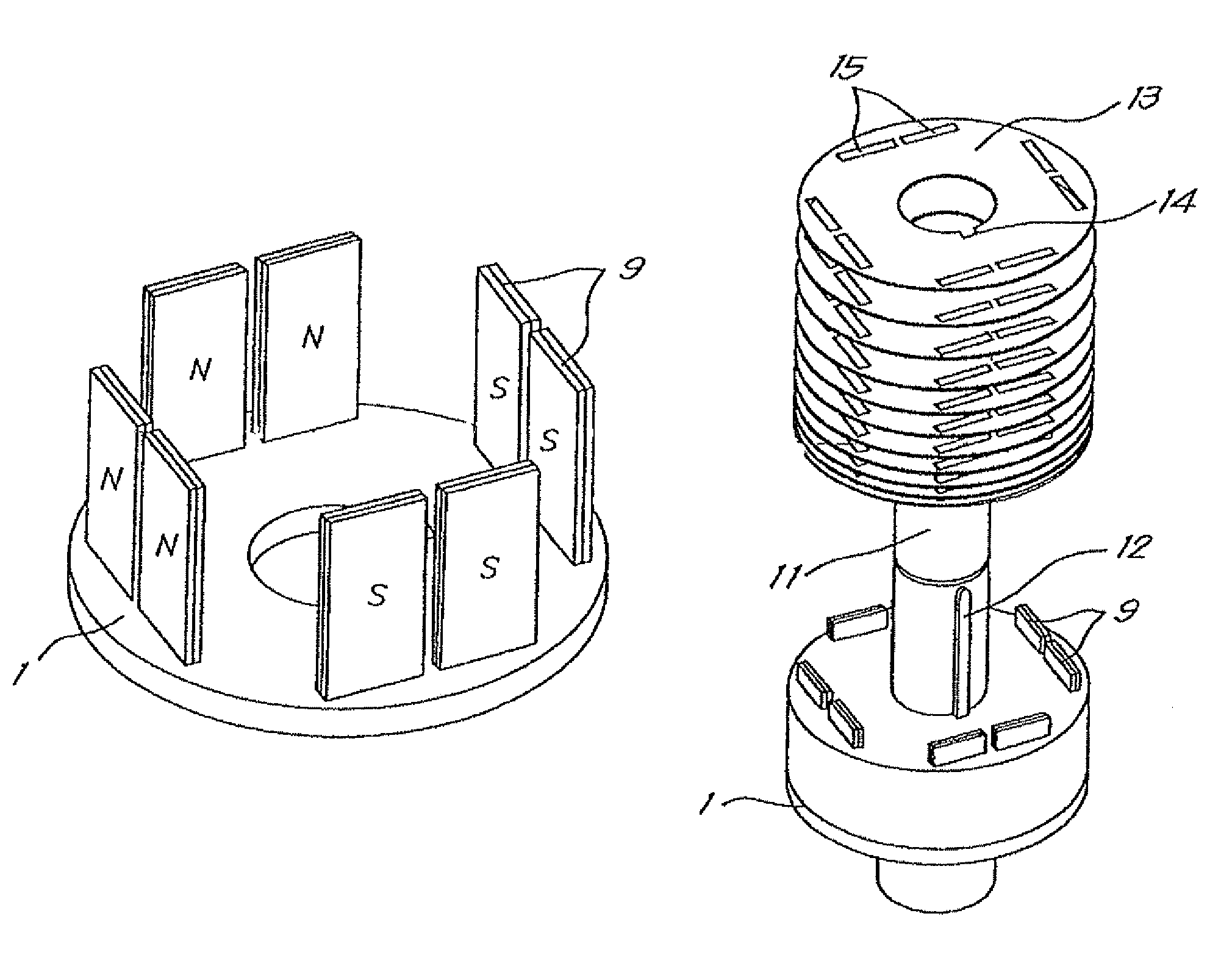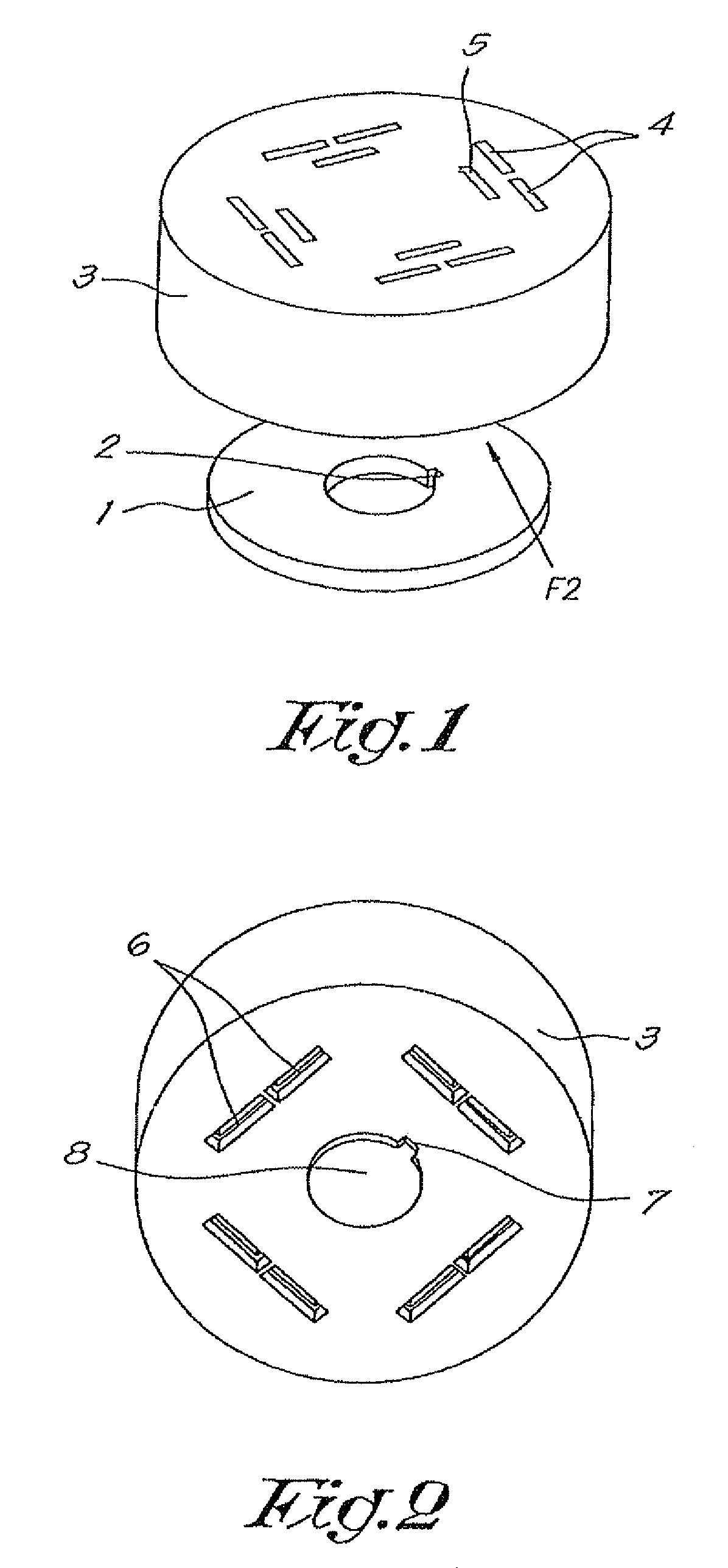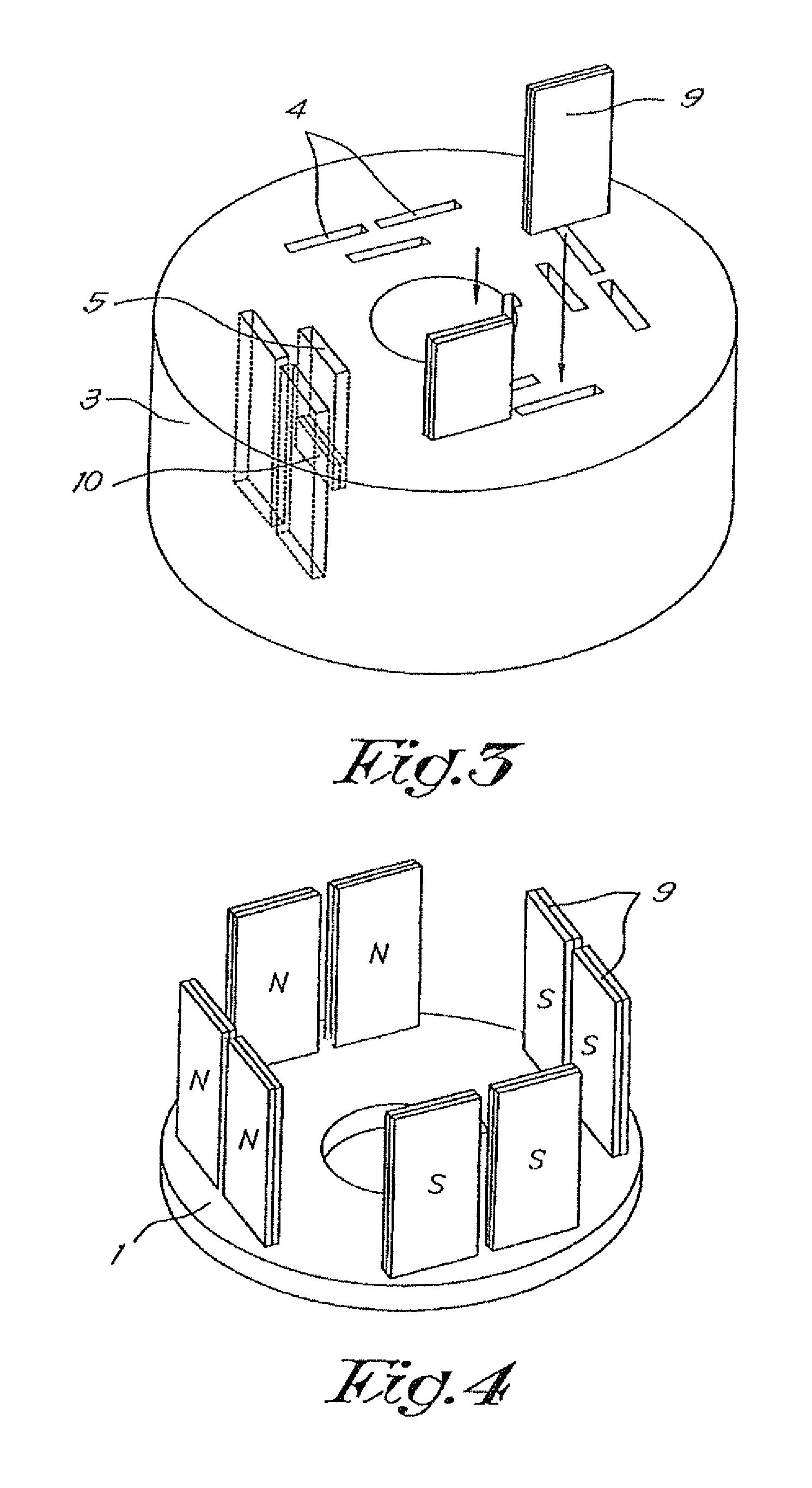Method for assembling a rotor with permanent magnets
a technology of permanent magnets and rotors, which is applied in the direction of rotating magnets, synchronous machines with stationary armatures, stator/rotor bodies, etc., can solve the problems of reducing the performance of the motor, high cost and temperature sensitive methods, and difficult to introduce permanent magnets in the recesses provided for this purpose in the lamellae, etc., and achieves high energy requirements.
- Summary
- Abstract
- Description
- Claims
- Application Information
AI Technical Summary
Benefits of technology
Problems solved by technology
Method used
Image
Examples
Embodiment Construction
[0045]FIG. 1 shows a non-ferromagnetic support plate 1 which in this example is disc-shaped and demonstrates a preferably centrally located, through, round hole, as well as a recess 2 that in this case consists of a notch in the circumferential wall of the said central hole.
[0046]On the aforementioned support plate 1 a non-ferromagnetic holder 3 can be placed, whereby in this case said holder 3 shows also a disc-shape and whereby this holder 3 is provided with recesses 4 extending in the axial direction and which, in this case, continue through the entire thickness of the holder 3, and with recesses 5 which, in this case, only continue up to the half of the depth of the holder.
[0047]As represented in FIG. 2 the exits 6 of the recesses 4 through the holder 3 are visible on one axial end of the holder 3, which exits 6 are widened towards the end plane of the concerning axial end.
[0048]The concerning end plane is also provided with a keyway 7 which together with a disc-shaped protubera...
PUM
| Property | Measurement | Unit |
|---|---|---|
| pressure | aaaaa | aaaaa |
| distance | aaaaa | aaaaa |
| magnetic field | aaaaa | aaaaa |
Abstract
Description
Claims
Application Information
 Login to View More
Login to View More - R&D
- Intellectual Property
- Life Sciences
- Materials
- Tech Scout
- Unparalleled Data Quality
- Higher Quality Content
- 60% Fewer Hallucinations
Browse by: Latest US Patents, China's latest patents, Technical Efficacy Thesaurus, Application Domain, Technology Topic, Popular Technical Reports.
© 2025 PatSnap. All rights reserved.Legal|Privacy policy|Modern Slavery Act Transparency Statement|Sitemap|About US| Contact US: help@patsnap.com



